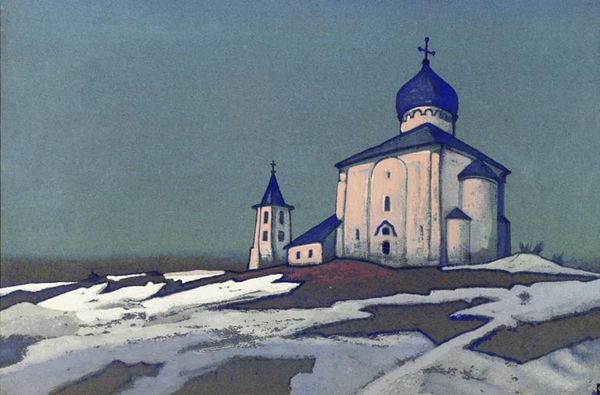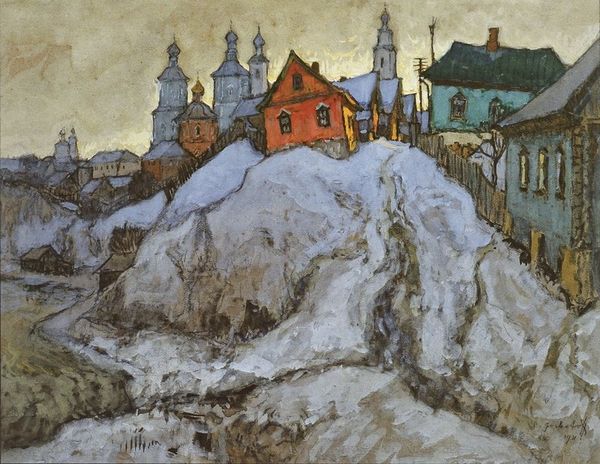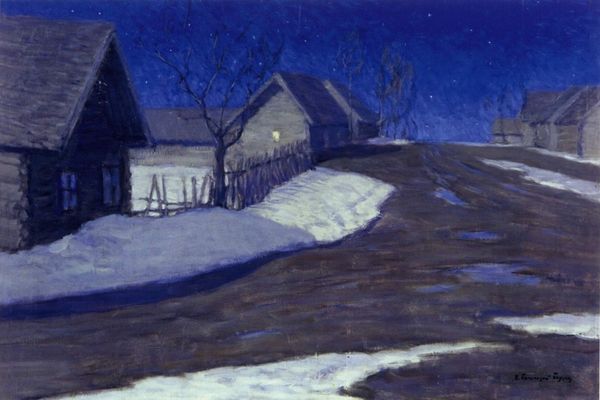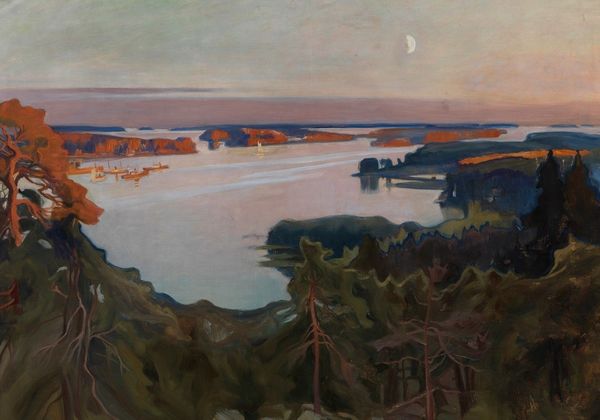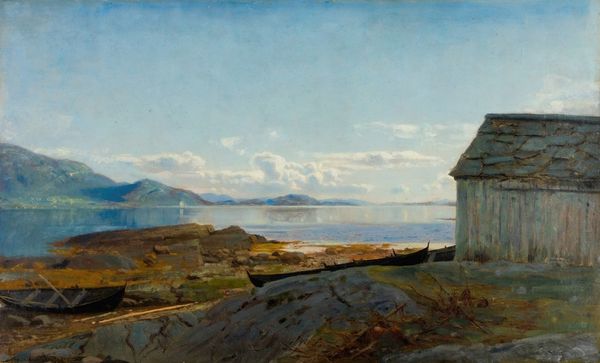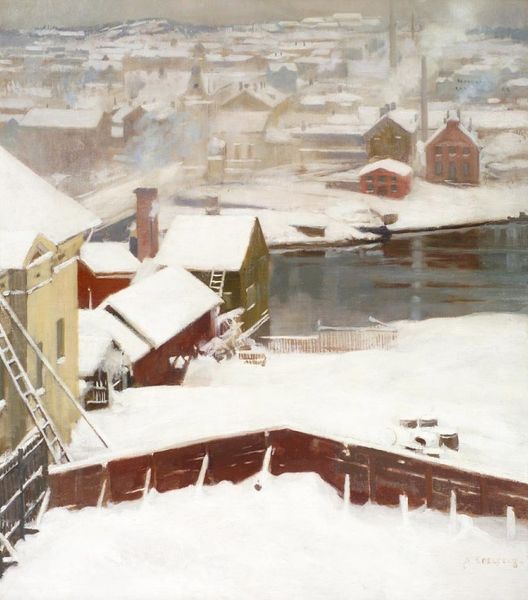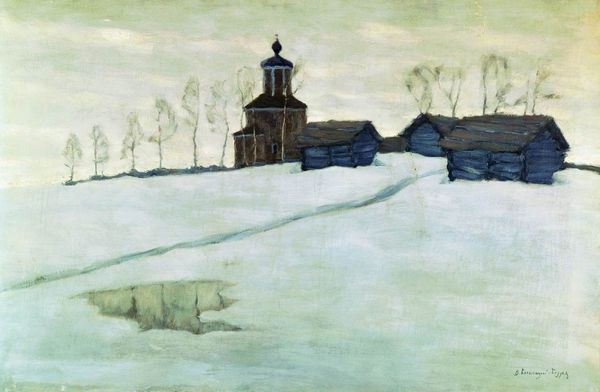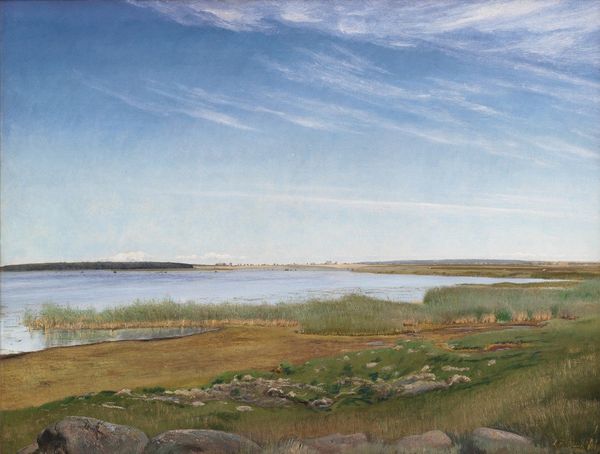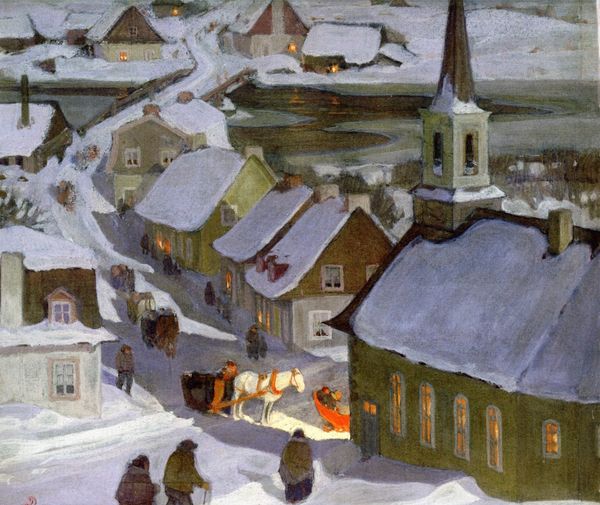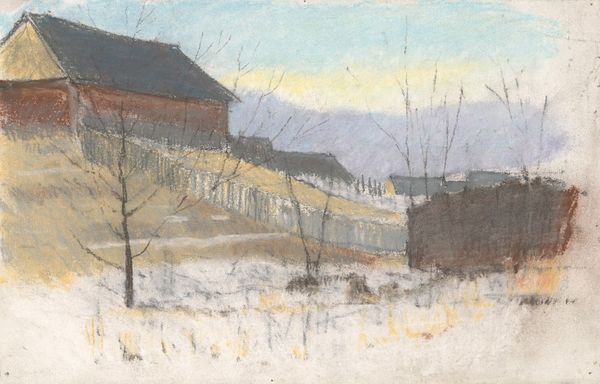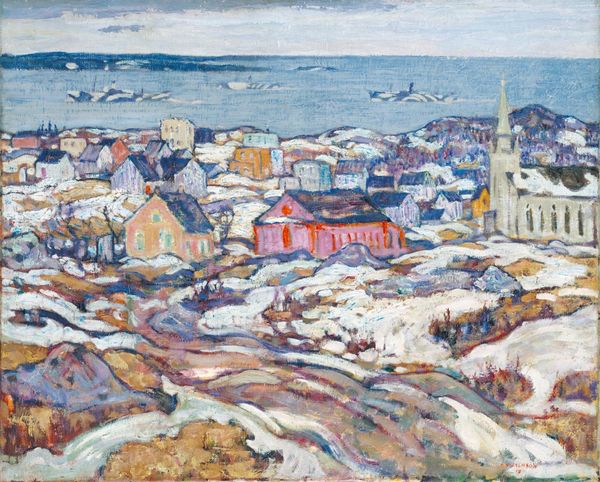
painting, oil-paint
#
the-ancients
#
painting
#
oil-paint
#
landscape
#
perspective
#
figuration
#
form
#
oil painting
#
intimism
#
romanticism
#
cityscape
#
post-impressionism
Copyright: Public domain
Curator: This is "Orthodox Monastery in Latvia" by Vilhelms Purvitis. It’s an oil painting that evokes the Romantic and Post-Impressionist movements, known for their emphasis on emotive expression. Editor: I’m immediately struck by the tranquility; it has this hazy stillness like right after snowfall. The muted color palette, that blend of blues and browns, creates a real sense of calm and distance. Curator: Yes, Purvitis masterfully employed oil paint, looking back at earlier, classical, landscapes, yet incorporating more modern painting styles such as Impressionism that were coming to the forefront during this time. How the paint has been layered speaks volumes, considering that artistic creation itself has become so industrial. Editor: Agreed, but I'm drawn to what this monastery represents socially, set against the natural landscape. In what ways does a monastery of this magnitude dictate power and control of labor within the surrounding landscape? What are the social and political influences inherent within such buildings? Curator: Well, we could analyze the physical labor required for construction, how the landscape has had to accommodate to its presence. Looking at Purvitis as a Latvian artist working when class structures were quite rigid informs the work immensely. Editor: Right. It definitely begs a deeper inquiry into structures and historical hierarchies. Consider too that the inclusion of bare, early springtime trees acts as a very strong marker of passing time and potentially generational tension. How has tradition dictated landscape? Curator: I appreciate your insights there; the layering in this piece is fascinating, reflecting not only a technical mastery but perhaps alluding to levels of historical tension. Editor: For sure. And, as a Romanticist painter, I'm curious what this selection meant for him politically and ideologically. Is it glorification, a symbol of cultural resistance, or something more complex? Curator: Maybe he wanted to draw attention to Latvia through his artwork. Editor: Exactly. Well, exploring this monastery through materiality, brushstrokes, and even its very cultural context has revealed a complex and nuanced relationship with place and production. Curator: Absolutely, thinking about Purvitis's brushstrokes reminds me to contemplate the time-intensive work done here, offering fresh perspective that goes deeper into place, materiality and structure.
Comments
No comments
Be the first to comment and join the conversation on the ultimate creative platform.
